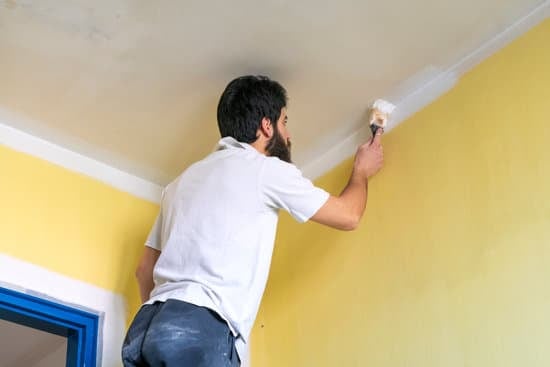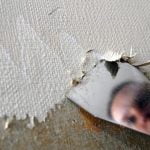Is the air in your home affecting your health? Learn how to improve indoor air quality in home to create a healthier living environment. Indoor air quality plays a crucial role in our overall well-being, as we spend a significant amount of time indoors. The presence of pollutants and allergens can have a detrimental impact on respiratory health, allergies, and overall comfort. Understanding the significance of maintaining good indoor air quality is essential for creating a healthy home environment.
Common indoor air pollutants such as tobacco smoke, mold, pet dander, and volatile organic compounds (VOCs) can have adverse effects on our health, ranging from mild irritations to more severe conditions such as asthma and respiratory diseases. Identifying these pollutants and understanding their potential health effects is the first step in addressing and improving indoor air quality.
In this article, we will explore practical tips and strategies for enhancing indoor air quality in your home. From identifying common sources of indoor air pollutants to choosing the right air filters and controlling humidity levels, we will provide actionable steps for creating a healthier indoor environment. Let’s delve into the essential aspects of maintaining good indoor air quality for better health and well-being.
Identifying Indoor Air Pollutants
Indoor air pollutants can significantly impact the quality of the air we breathe inside our homes, leading to various health issues. It is crucial to identify these pollutants and understand their sources in order to take effective measures to improve indoor air quality.
Some of the most common sources of indoor air pollutants include tobacco smoke, mold, pet dander, and volatile organic compounds (VOCs). Tobacco smoke contains over 7,000 chemicals, including more than 250 harmful ones. Mold thrives in damp environments and can release spores that worsen respiratory conditions. Pet dander, along with other animal allergens, can trigger allergic reactions in sensitive individuals. VOCs are emitted by various products such as paints, cleaning agents, and pesticides.
These pollutants can lead to a wide range of health issues, including respiratory problems, allergies, headaches, fatigue, and even more serious conditions such as heart disease and cancer. Understanding the sources of these pollutants is the first step towards improving indoor air quality and creating a healthier living environment for you and your family.
| Indoor Air Pollutant | Health Effects |
|---|---|
| Tobacco Smoke | Respiratory problems Allergies Headaches Fatigue Heart disease Cancer |
| Mold | Respiratory problems Allergies Headaches Fatigue |
| Pet Dander | Allergies Respiratory problems |
Tips for Improving Ventilation
Improving ventilation is crucial for maintaining good indoor air quality in your home. Proper ventilation helps to remove indoor pollutants, control humidity levels, and prevent the buildup of harmful airborne particles. By implementing practical tips to improve ventilation, you can create a healthier living environment for you and your family.
One effective way to improve ventilation is by simply opening windows and doors whenever possible. This allows fresh outdoor air to circulate throughout your home, helping to dilute indoor air pollutants. Additionally, using exhaust fans in areas such as the kitchen and bathroom can help remove excess moisture and pollutants from the air. For homes with inadequate natural ventilation, utilizing air purifiers can be an effective way to enhance indoor air quality by removing airborne particles.
In addition to these tips, it’s important to consider the impact of indoor activities on ventilation. Activities such as cooking, cleaning with harsh chemicals, or smoking indoors can significantly affect indoor air quality. Being mindful of these activities and taking precautions, such as using proper ventilation while cooking or opting for natural cleaning products, can contribute to better indoor air quality. Overall, prioritizing improved ventilation in your home is essential for creating a healthy living environment.
| Indoor Air Quality Tip | Description |
|---|---|
| Open Windows and Doors | Allow fresh outdoor air into your home to dilute indoor pollutants. |
| Use Exhaust Fans | Install and use exhaust fans in areas like the kitchen and bathroom to remove excess moisture and pollutants. |
| Utilize Air Purifiers | Consider using air purifiers as an additional measure to remove airborne particles from your home. |
Choosing the Right Air Filters
Indoor air quality can be significantly improved by using the right air filters in HVAC systems. High-quality air filters are essential for removing specific airborne pollutants that can have a detrimental effect on indoor air quality and overall health. When choosing the right air filters, it’s crucial to consider the following factors:
- Filter Efficiency: Look for air filters with a high Minimum Efficiency Reporting Value (MERV) rating, as higher MERV ratings indicate better filtration of airborne particles.
- Particle Size: Consider the size of particles that the air filter can capture, especially if there are specific allergens or pollutants of concern in your home.
- Airflow Resistance: Balance effective filtration with minimal impact on airflow by selecting air filters that provide adequate ventilation without putting strain on the HVAC system.
It’s important to note that different types of air filters are designed to target specific pollutants, so understanding your indoor air quality concerns is essential for making an informed decision. For example:
- HEPA Filters: Highly effective at capturing small particles and allergens, making them ideal for households with respiratory issues or allergies.
- Activated Carbon Filters: Best for adsorbing odors, gases, and volatile organic compounds (VOCs) commonly found in household products and materials.
- Pleated Filters: Provide a good balance between efficient filtration and airflow, making them suitable for general indoor air quality improvement.
By choosing the right air filters for your HVAC system, you can effectively reduce the presence of indoor pollutants and allergens, leading to cleaner and healthier indoor air. Additionally, regular maintenance and replacement of air filters is important to ensure optimal performance and continued improvement in indoor air quality.
Controlling Humidity Levels
Maintaining the proper humidity levels in your home is crucial for ensuring good indoor air quality. Excessive moisture in the air can lead to a variety of issues, including mold growth, musty odors, and an increased risk of respiratory problems. To combat these issues, consider the following tips for controlling humidity levels:
- Use a dehumidifier: Investing in a high-quality dehumidifier can help remove excess moisture from the air, particularly in areas of the home that tend to be more humid, such as basements and bathrooms.
- Proper ventilation: Ensure that your home is adequately ventilated to allow moisture to escape. This can be achieved by using exhaust fans in kitchens and bathrooms and by opening windows when weather permits.
- Monitor indoor humidity: Use a hygrometer to measure the humidity levels in your home. The ideal indoor humidity level should be between 30-50%. If levels exceed this range, take action to reduce moisture in the air.
By implementing these strategies, you can effectively control humidity levels in your home, contributing to better indoor air quality and creating a healthier living environment for you and your family.
High indoor humidity not only affects the comfort of your home but also has implications for your health. By taking proactive steps to control humidity levels, you can minimize the potential risks associated with excessive moisture in the air and improve overall indoor air quality.
Eliminating Indoor Allergens
Indoor allergens can significantly impact the quality of indoor air and contribute to allergy symptoms for many individuals. Common indoor allergens include dust mites, pet dander, pollen, and mold spores. These allergens can trigger a range of symptoms, including sneezing, coughing, itchy eyes, and respiratory issues. Therefore, it is important to take proactive measures to eliminate indoor allergens and improve overall indoor air quality.
Reducing Dust Mites
Dust mites are microscopic organisms that thrive in warm and humid environments. They are commonly found in bedding, upholstered furniture, and carpeting. To reduce dust mite exposure, it is recommended to use allergen-proof covers on mattresses and pillows, wash bedding regularly in hot water, and vacuum carpets and upholstery frequently. Additionally, minimizing humidity levels in the home through proper ventilation and using dehumidifiers can help control dust mite populations.
Managing Pet Dander
Pet owners may struggle with controlling pet dander, which consists of tiny flecks of skin shed by cats, dogs, birds, and other animals with fur or feathers. Regular grooming of pets can help reduce the amount of dander they produce.
It is also important to vacuum and dust frequently to remove any pet dander that may accumulate on surfaces in the home. Creating designated pet-free zones within the home can also help minimize exposure to pet dander for those with allergies.
Preventing Mold Growth
Mold thrives in areas with high moisture levels and poor ventilation. To prevent mold growth indoors, it is crucial to address any sources of excess moisture promptly. This may include fixing leaks in plumbing or roofs, using exhaust fans in bathrooms and kitchens, and ensuring proper drainage around the foundation of the home. Regularly cleaning and maintaining areas prone to mold growth can further help in preventing its presence.
By implementing these strategies for eliminating indoor allergens such as dust mites, pet dander, and mold spores from the home environment, individuals can effectively improve their indoor air quality while reducing allergy symptoms for a healthier living space.summarize.
Avoiding Toxins and Chemicals
Toxins and chemicals are often lurking in common household products and materials, contributing to poor indoor air quality. Many everyday items such as cleaning products, personal care items, and home furnishings contain harmful substances that can negatively impact the air we breathe indoors. Being mindful of these toxins and chemicals is essential for maintaining a healthy living environment.
Identifying Common Toxins and Chemicals
Common household cleaning products often contain volatile organic compounds (VOCs) which can contribute to indoor air pollution. Similarly, personal care items such as aerosol sprays, perfumes, and hair sprays can release harmful chemicals into the air. Additionally, certain home furnishings such as furniture made with pressed wood products can emit formaldehyde, a known indoor air pollutant.
Choosing Safer Alternatives
Being conscious of the ingredients in cleaning products and personal care items is crucial for avoiding toxins and chemicals. Opting for eco-friendly or natural alternatives that are free from harsh chemicals can significantly reduce indoor air pollution. Similarly, selecting low-VOC or VOC-free paints and finishes for home improvement projects is important for minimizing airborne toxins.
Proper Storage and Ventilation
Storing household chemicals properly in sealed containers and out of reach of children can help minimize their impact on indoor air quality. Proper ventilation is also key when using products that may contain toxic substances – ensuring good airflow can help prevent a buildup of pollutants indoors.
By being mindful of the toxins and chemicals present in our daily lives, we can take proactive steps to minimize their impact on indoor air quality. Making informed choices about the products we use, opting for safer alternatives, and practicing proper storage and ventilation techniques are all essential strategies for creating a healthier indoor environment free from harmful pollutants.
Regular Maintenance and Inspection
Maintaining good indoor air quality in the home involves more than just implementing ventilation and filtration strategies. It also requires regular maintenance and inspection of various systems within the household. HVAC systems, in particular, play a crucial role in regulating indoor air quality, and as such, they require attentive care to ensure optimal performance.
One important aspect of regular maintenance is to schedule routine inspections of HVAC systems. This includes checking for any leaks or blockages in the ductwork, ensuring that all components are functioning properly, and identifying any signs of mold or moisture accumulation. Additionally, it is essential to clean or replace air filters according to the manufacturer’s recommendations to prevent the buildup of airborne pollutants.
In addition to HVAC maintenance, homeowners should also consider monitoring indoor air quality using appropriate devices. Indoor air quality monitors can measure levels of common pollutants such as carbon monoxide, particulate matter, and volatile organic compounds (VOCs), providing valuable insights into potential issues that may be affecting the air quality within the home.
By regularly conducting these inspections and utilizing monitoring devices, individuals can take proactive measures to address any concerns and maintain a healthy living environment for themselves and their families.
Conclusion
In conclusion, maintaining good indoor air quality is essential for promoting overall health and well-being. By understanding the sources of indoor air pollutants and their potential health effects, individuals can take proactive steps to improve the air quality in their homes. From identifying common pollutants to implementing practical tips for better ventilation and humidity control, there are several strategies that can be easily integrated into daily routines.
By prioritizing proper ventilation, choosing the right air filters, controlling humidity levels, and eliminating indoor allergens and toxins, individuals can significantly reduce the presence of harmful pollutants in their home environment. Additionally, regular maintenance of HVAC systems and monitoring indoor air quality are crucial for sustaining a healthy living space.
It’s important for individuals to recognize that they have the power to take action in improving indoor air quality. By following the outlined tips and guidance provided in this article, readers can create a safer and healthier environment for themselves and their families. Ultimately, by making conscious efforts to improve indoor air quality, individuals can experience the benefits of breathing clean air and reducing potential health risks associated with indoor pollutants.
Frequently Asked Questions
How Can I Improve the Air Quality in My Indoor Room?
Improving the air quality in your indoor room can be done by taking several simple steps. First, consider proper ventilation by opening windows and using exhaust fans to bring in fresh air from outside.
Second, reducing sources of indoor pollution such as smoking, using natural gas or wood-burning stoves, and limiting the use of harsh cleaning products can help. Lastly, maintaining a clean environment by regularly vacuuming, dusting, and keeping plants to help filter the air can improve indoor air quality.
What Are 3 Strategies to Improve Indoor Air Quality?
There are several strategies that can be implemented to improve indoor air quality. One effective strategy is to eliminate or reduce sources of indoor pollution by avoiding smoking inside, using natural cleaning products, and properly ventilating cooking and shower areas.
Another strategy is to use high-quality air filters and purifiers to remove particles and allergens from the air. Lastly, increasing ventilation in the home by opening windows or using exhaust fans can help circulate fresh outdoor air into indoor spaces.
Do Air Purifiers Improve Air Quality?
Air purifiers have been shown to effectively improve indoor air quality by removing airborne particles such as dust, pollen, pet dander, and mold spores from the air. They work by drawing in air through a series of filters that capture these particles before releasing cleaner air back into the room.
While individual results may vary depending on the type of purifier used and the specific pollutants present in the environment, overall evidence suggests that air purifiers can be a beneficial tool in improving indoor air quality.

I’m thrilled to have you here as a part of the Remodeling Top community. This is where my journey as an architect and remodeling enthusiast intersects with your passion for transforming houses into dream homes.





